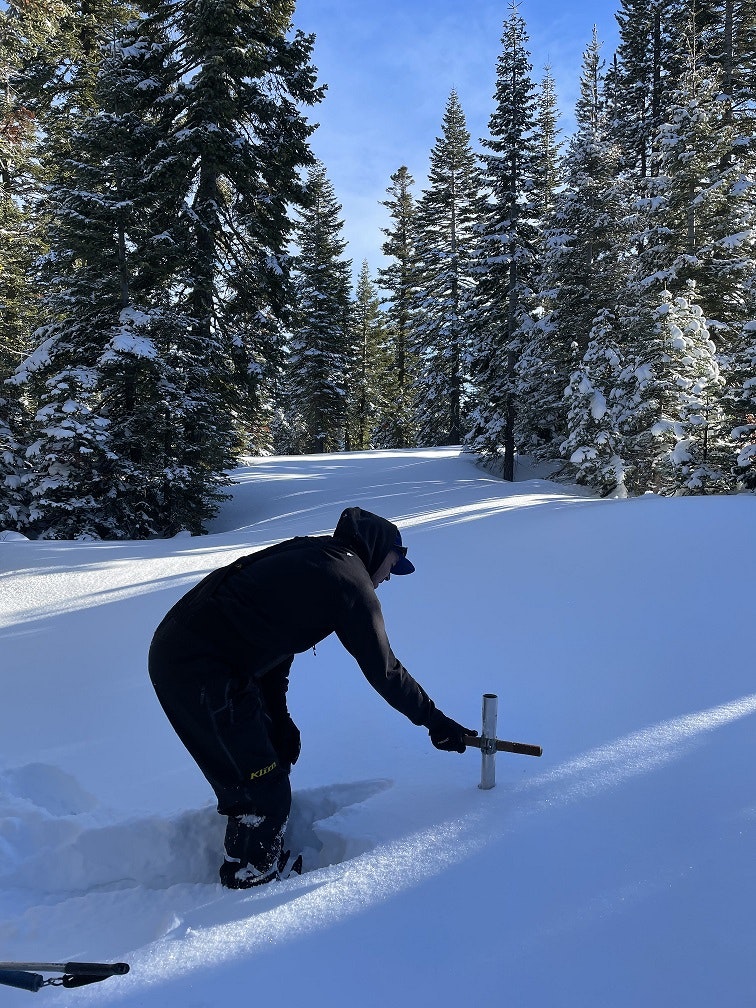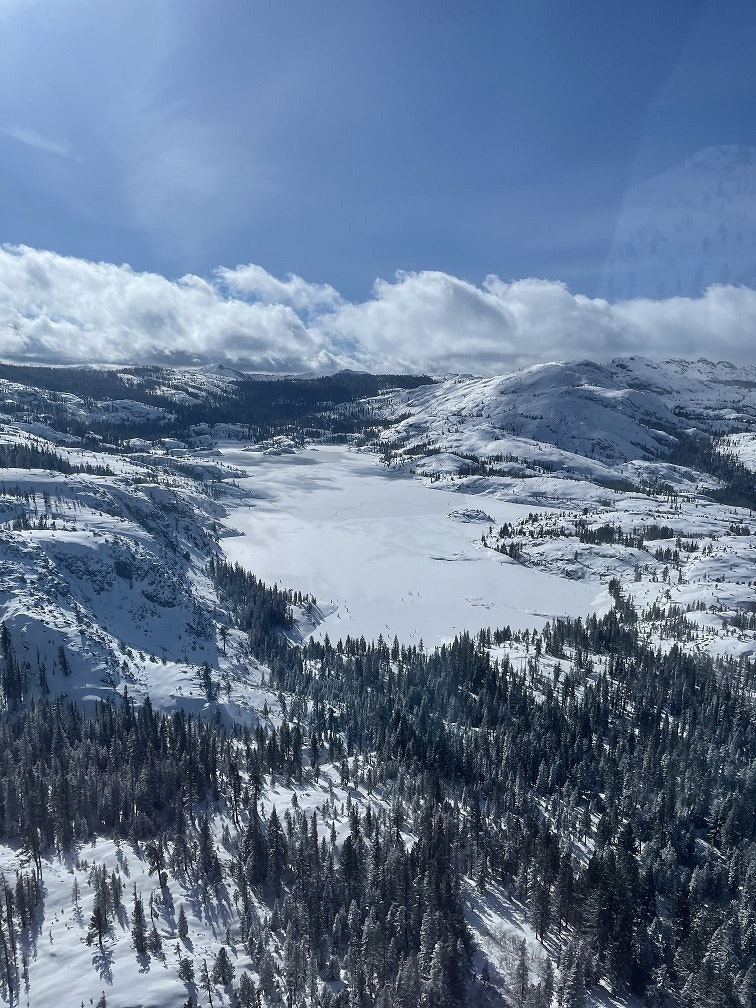NID Snow Survey: storms deliver; snowpack still below normal and reservoir levels at 87 percent of average
The recent storms helped increase the amount of precipitation in the watersheds that are the source for Nevada Irrigation District (NID) water supply, yet totals for the season remain lower than normal for the year.
“January produced near average precipitation for the month. The storms after January 26 added approximately 6 inches of water content to our snowpack,” said Thor Larsen, NID’s Water Resources Superintendent. “While there was improvement to the snowpack, we are still below average and continue to encourage conservation.”

NID’s first snow surveys of the year includes two sample dates, on January 26 and on February 4. NID surveyors took measurements – both snow depth and the water content contained in the snow - at five different Sierra locations.
Here are the results of NID’s survey on Jan. 26: the English Mountain snow course (7,100 ft.) had 49.5 inches of snow with a water content of 15.2 inches. Findley Peak (6,500 ft.) had a snowpack of 36 inches and a 9.5-inch water content. Bowman Reservoir (5,563 ft.) had 21.5 inches of snow and a 7.4-inch water content.
For the tallies, the courses sampled in January do not reflect the snow delivered by a storm later in the month.
The surveyors took samples at the District’s highest course the first week of February; Webber Peak (7,800-foot elevation) had 65.8 inches of snow with a water content of 19 inches. Webber Lake (7,000 ft.) had 69 inches of snow with a water content of 17.6 inches.
Note: a sixth snow course at a lower elevation, Chalk Bluff at 4,850 feet on the Deer Creek watershed was not included in the five-course mountain division average.

“Applying the late January storm totals to the sites measured on Jan. 26, our five course average is approximately 17 inches of water content. This puts the February average close to 85 percent,” Larsen said.
NID’s reservoirs are at 64 percent of capacity with 172,758 acre-feet, or 87 percent average for the season (an acre foot of water equals about 326,000 gallons, enough water to cover an acre of land 1-foot deep. An acre foot can typically meet the annual indoor and outdoor needs of two average households).
This time of year reservoir storage is reflective of the amount of precipitation that fell last year. A diminished snowpack this year will impact storage later in the year as less runoff enters the District’s system.
A member of the California Cooperative Snow Survey, NID conducts official snow surveys. Results of the surveys are used to predict water availability locally and statewide.
For 100 years, the District has been delivering agricultural water and high quality drinking water to customers in Nevada, Placer, and Yuba counties. NID water originates as snowmelt found in 70,000 acres of high elevation watershed near the headwaters of the Yuba River, Bear River and Deer Creek. Water is stored in 27 reservoirs and moved through one of seven treatment plants to produce three billion gallons of drinking water each year for 25,000 home and businesses. Hundreds of miles of canals and pipes deliver water to 30,000 acres of irrigated land, as well as to homes, farms and businesses.
Visit nidwater.com
###
